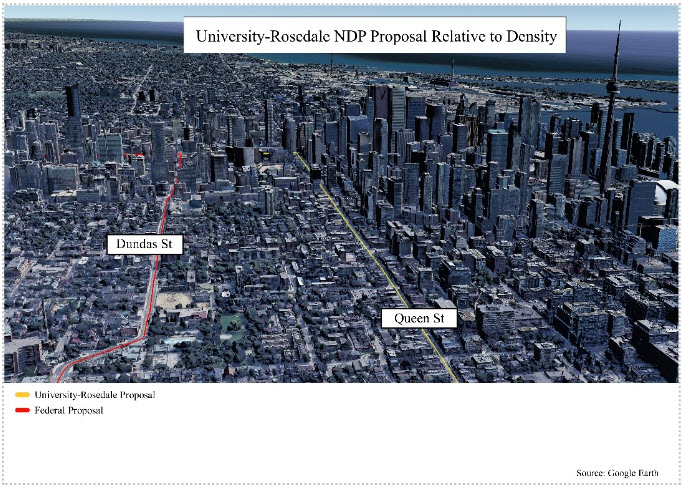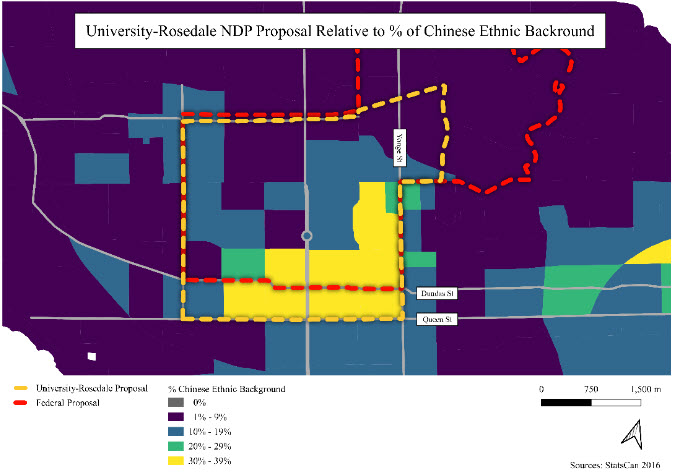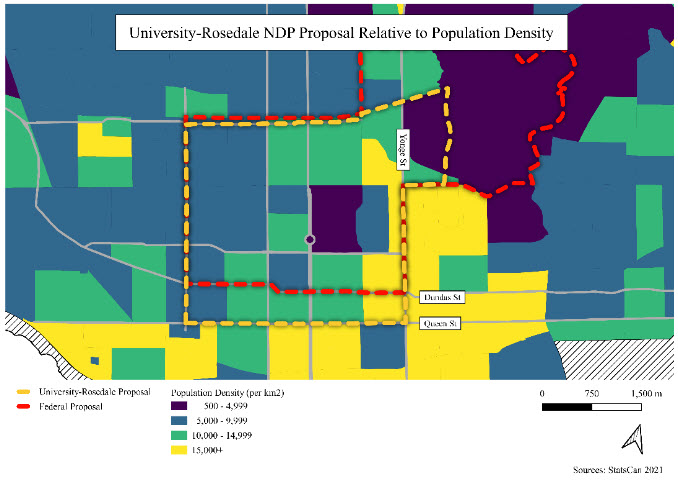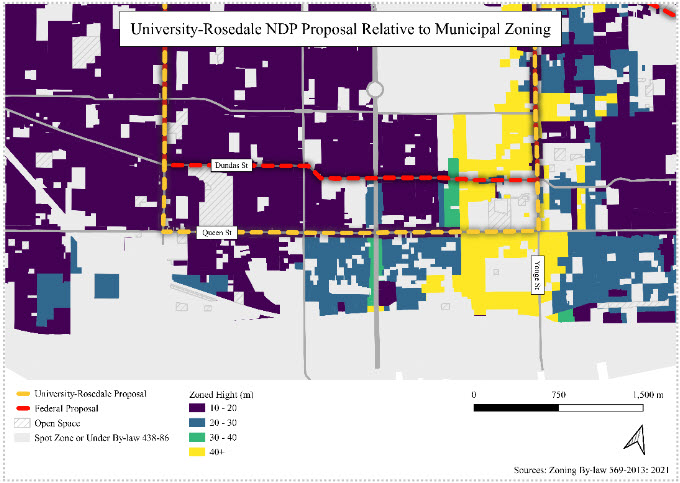Commentaire 393 – commentaires et rétroaction
Les documents ci-dessous sont affichés dans la langue officielle d'origine tels qu'ils ont été reçus.
Retour aux commentaires et rétroaction du public
Jessica Bell
My written submission to the Ontario Commission responsible for federal redistricting concerns the riding of University Rosedale.
My name is Jessica Bell. I'm the current MPP for University Rosedale. All of Ontario's provincial ridings - with the exception of the north - align with the federal riding districts.
Proposed boundary changes
I am proposing the following changes to the University-Rosedale boundary proposed by the Federal election districts redistribution commission.
On the south, bring University Rosedale from Dundas down to Queen St.
On the east, go up Yonge, take a right on Bloor, head north up Mount Pleasant to the CN tracks.
On the north, go west along the CN tracks, and then along Dupont. This boundary mostly follows the current riding.
On the west go down Ossington.
Arguments to support the proposed boundary changes
The population for this proposed area will sit at approximately 117-000 to 120,000. That's within the range of population that the commission is aiming to meet for Ontario ridings.
Moving the boundary down from Dundas Ave to Queen St will ensure the south of the riding follows a major defining road (Queen St) that separates Spadina Fort York and University Rosedale.
Moving the boundary down to Queen Street keeps communities of identity together. South of Queen, is where the condo district begins, and north of Queen - west of Spadina - is where the lower density neighborhoods begin. I have enclosed a Google Earth image showing that the condo district begins at Queen, not Dundas. I also have enclosed density maps showing that density increases along Queen St, not Dundas Ave.
Moving down to Queen keeps Ontario's largest Chinatown community in one riding. Over 13,000 people in University Rosedale speak Mandarin or Cantonese at home as their first language. They are the largest minority demographic in University Rosedale. Many live in the Chinatown area.
Currently the downtown Chinese-Canadian community is predominately split between two ridings - Spadina Fort York and University Rosedale. Extending the boundary from Dundas to Queen will keep the majority of this community of identity together in one riding. I have enclosed a map outlining the concentration of Chinese-Canadians in these ridings to demonstrate my argument.
Extending the boundary down to Queen Street also keeps the area known as the Grange whole. This area is represented by the Grange Community Residents Association, who expressed concern that their area is divided between Spadina Fort York and us. They would prefer to keep their community whole.
To ensure the riding has approximately 117,000 people, the Eastern and Northern boundaries of the riding would need to be shrunk to accommodate the increase in people from the North.
Growth patterns
While the Electoral Commission doesn't explicitly take future growth into account, to achieve vote parity over the 10-year period, I believe it is important for the Commission to consider growth patterns when establishing riding boundaries. Ridings that are growing quickly, such as Spadina Fort York and Toronto Centre, should start with a population below the provincial riding average.
This is a summary of my proposed changes.
Thank you for considering this request. Please contact me if you would like more information.
Sincerely,
Jessica Bell
MPP for University Rosedale




